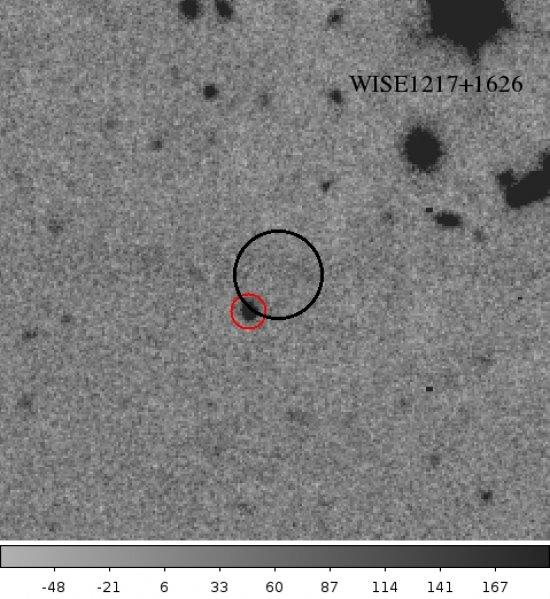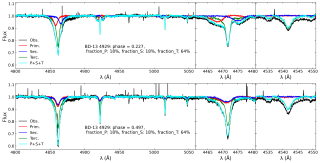The aim of the project is to contribute to the characterisation of the spectral energy distribution of the coolest brown dwarfs discovered to date, the Y dwarfs.
We obtained z-band far-red imaging for six Y dwarfs and a T9+Y0 binary with the OSIRIS (Optical System for Imaging and low Resolution Integrated Spectroscopy) instrument on the 10.4-m Gran Telescopio de Canarias (GTC).
We detect five of the seven known Y dwarfs in the z-band, infer theioptical-to-infrared colours, and measure their proper motions. We find a higher dispersion in the z-J and z-H colours of Y0 dwarfs than in T dwarfs. This dispersion is found to be correlated with H-w2 The high dispersion in the optical-to-infrared colours of Y dwarfs and the possible turn-over towards bluer colours may be a consequence of the presence of sulfide clouds with different thicknesses, the depletion of alcalines, and/or gravity effects.
Image en banda z of a Y dwarf, WISE1217+1626. The red circle indicates the position of the Y dwarf on the GTC image whereas the black circle denominates the position of the discovery image.
Advertised on
References
Lodieu et al. 2013, A&A, 750, L2



